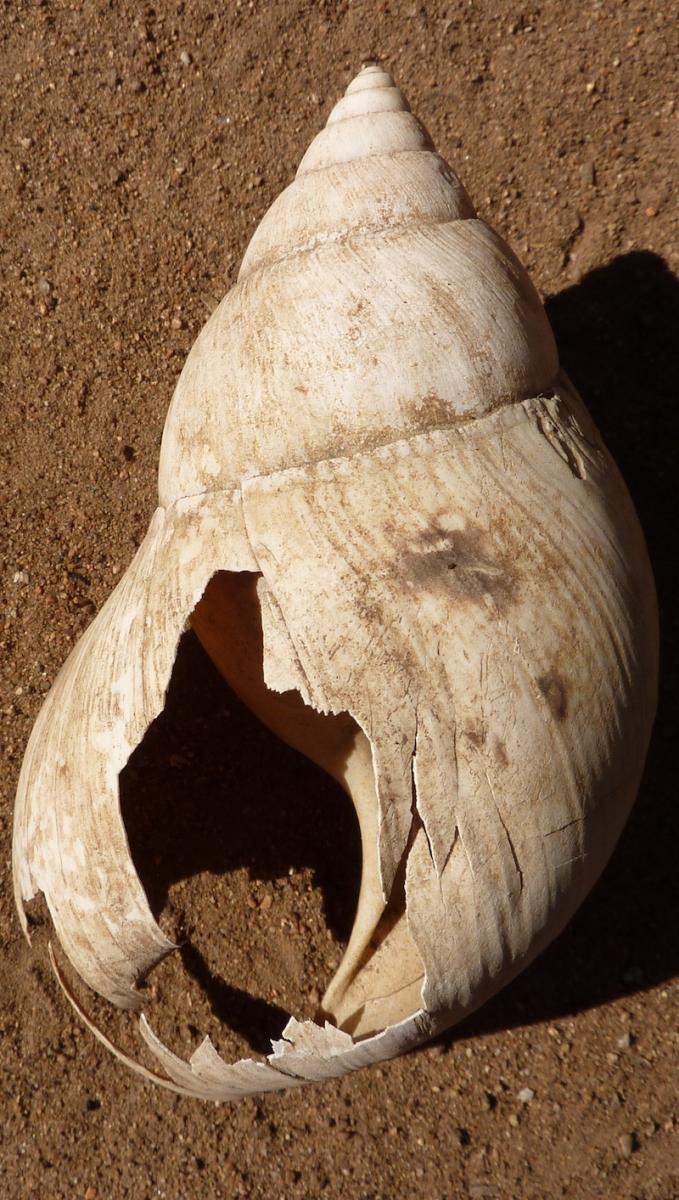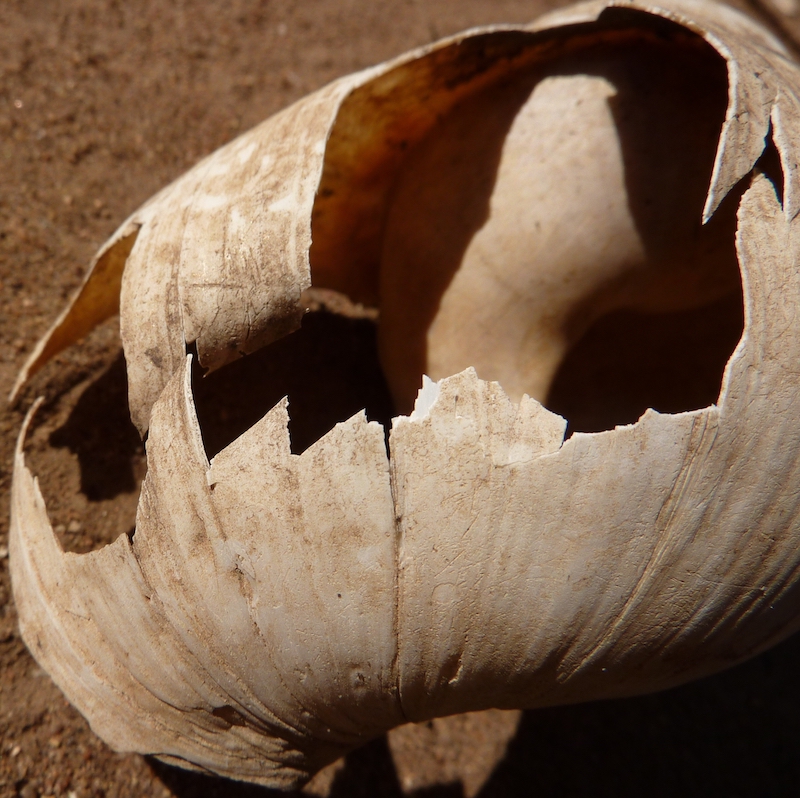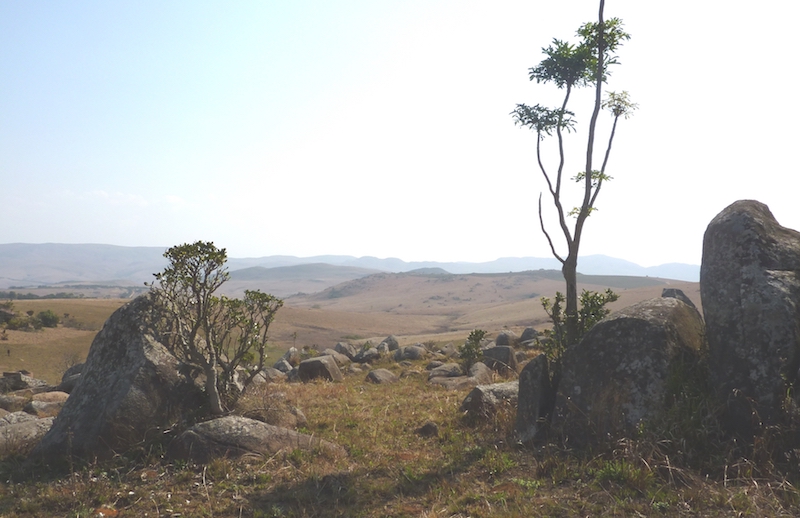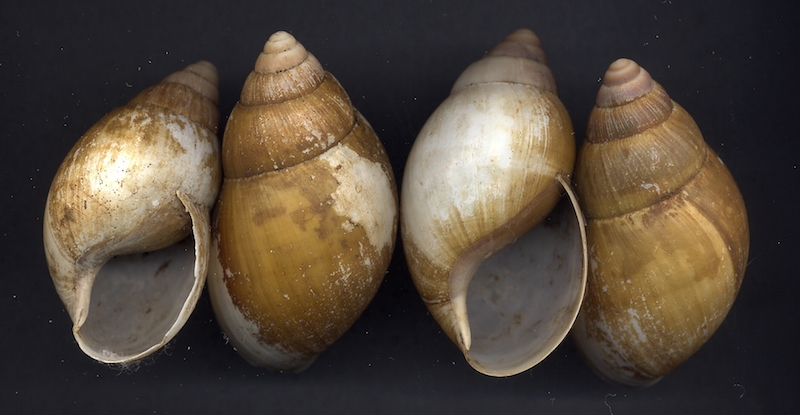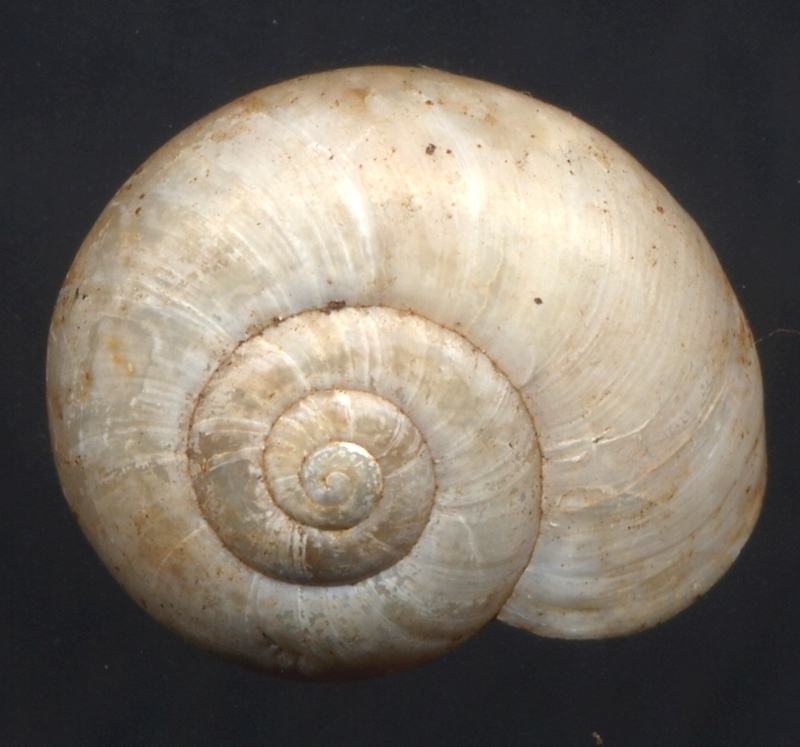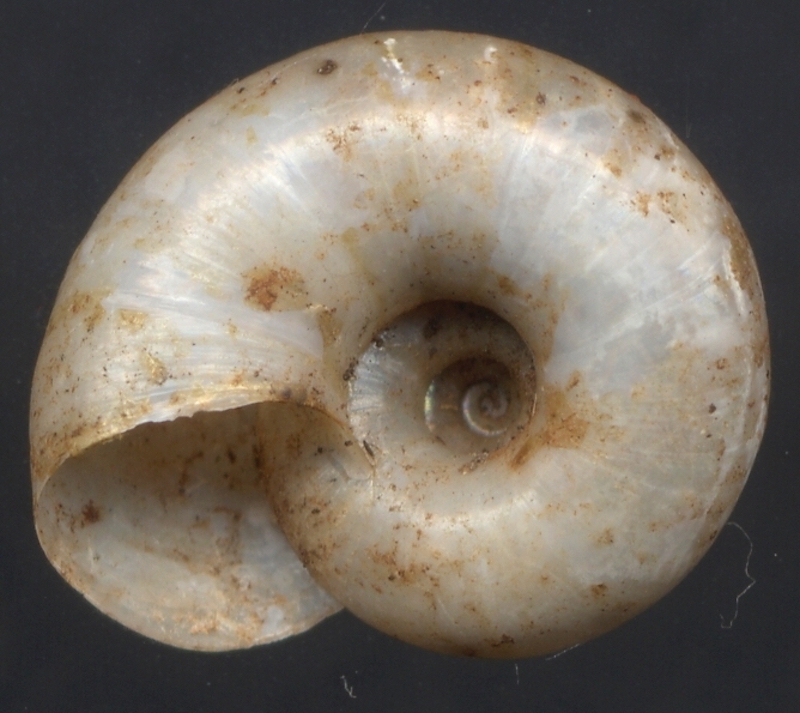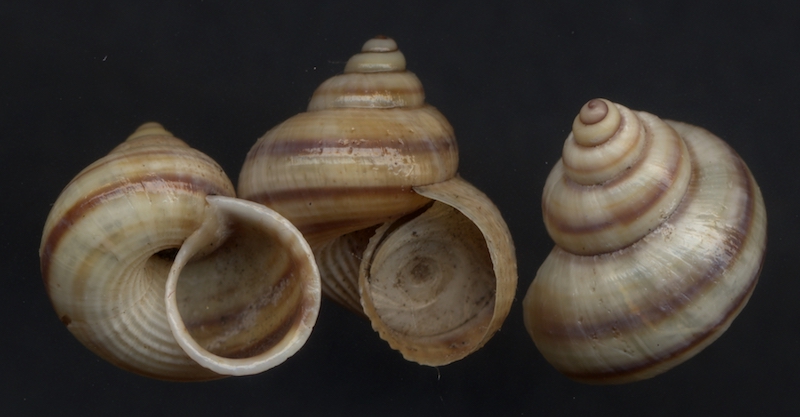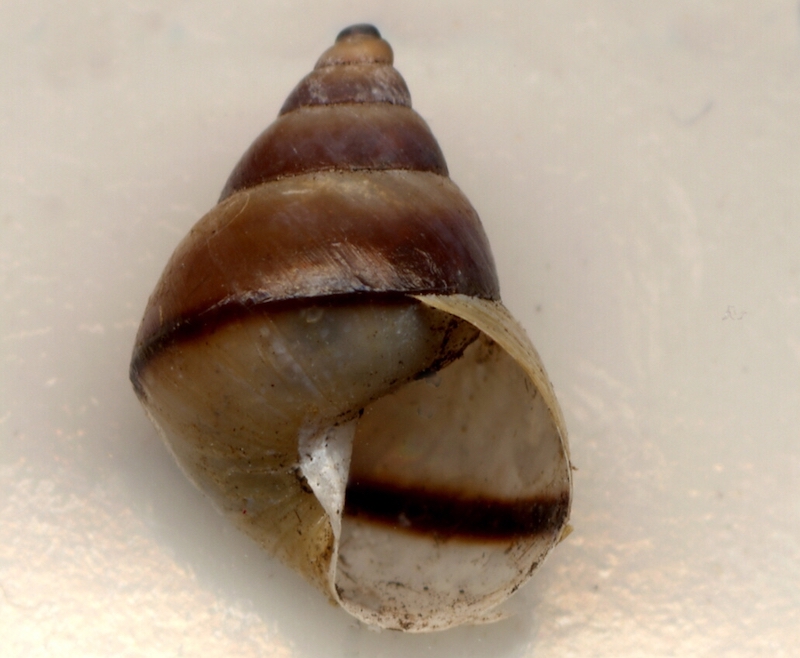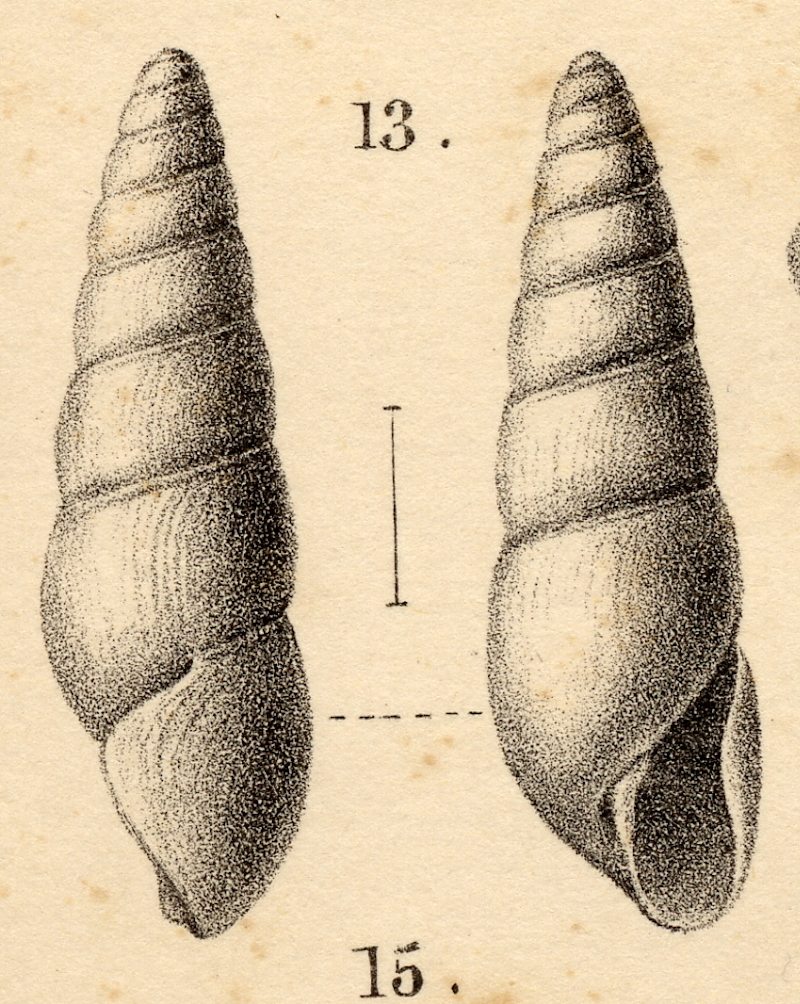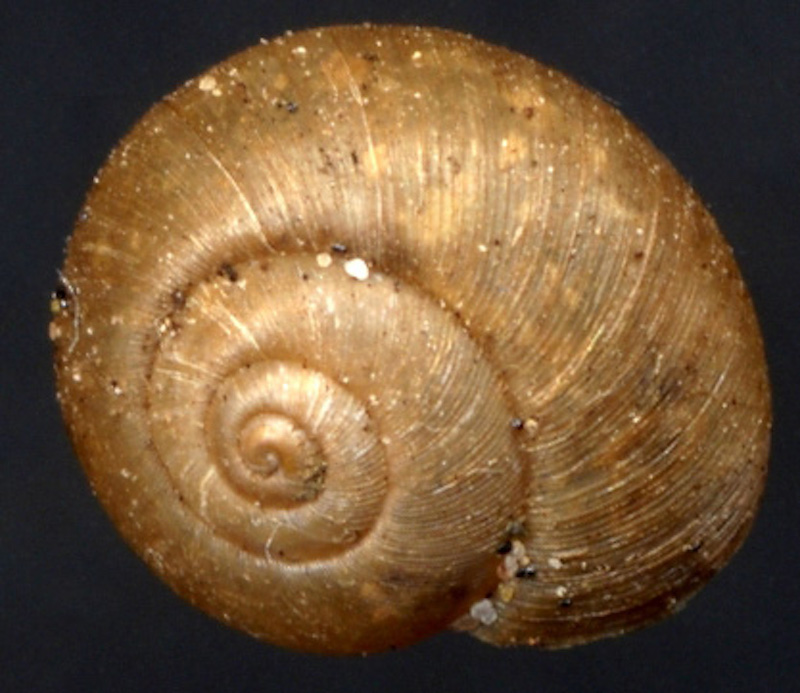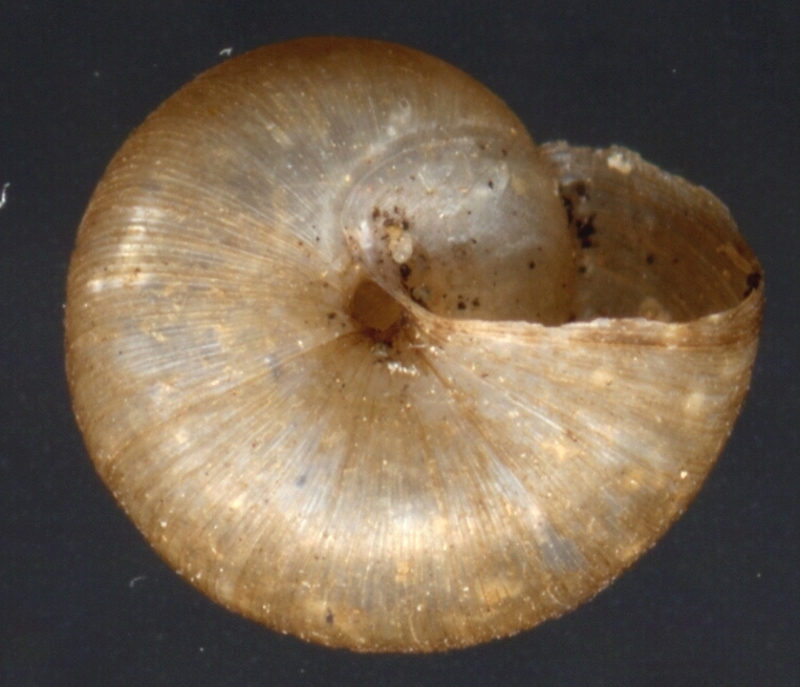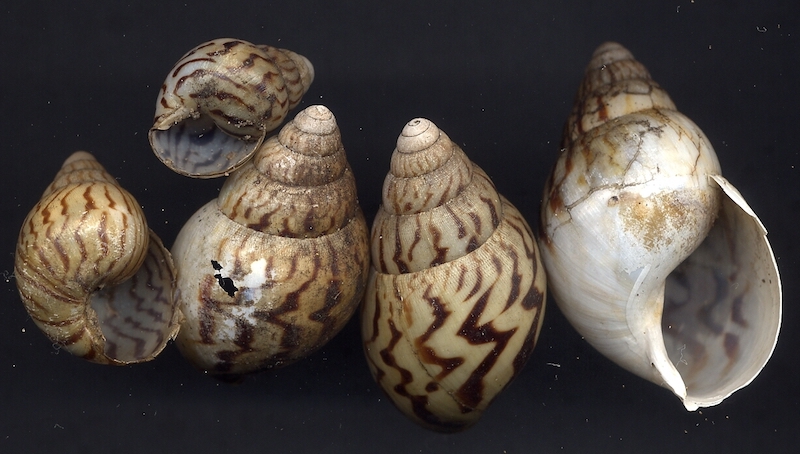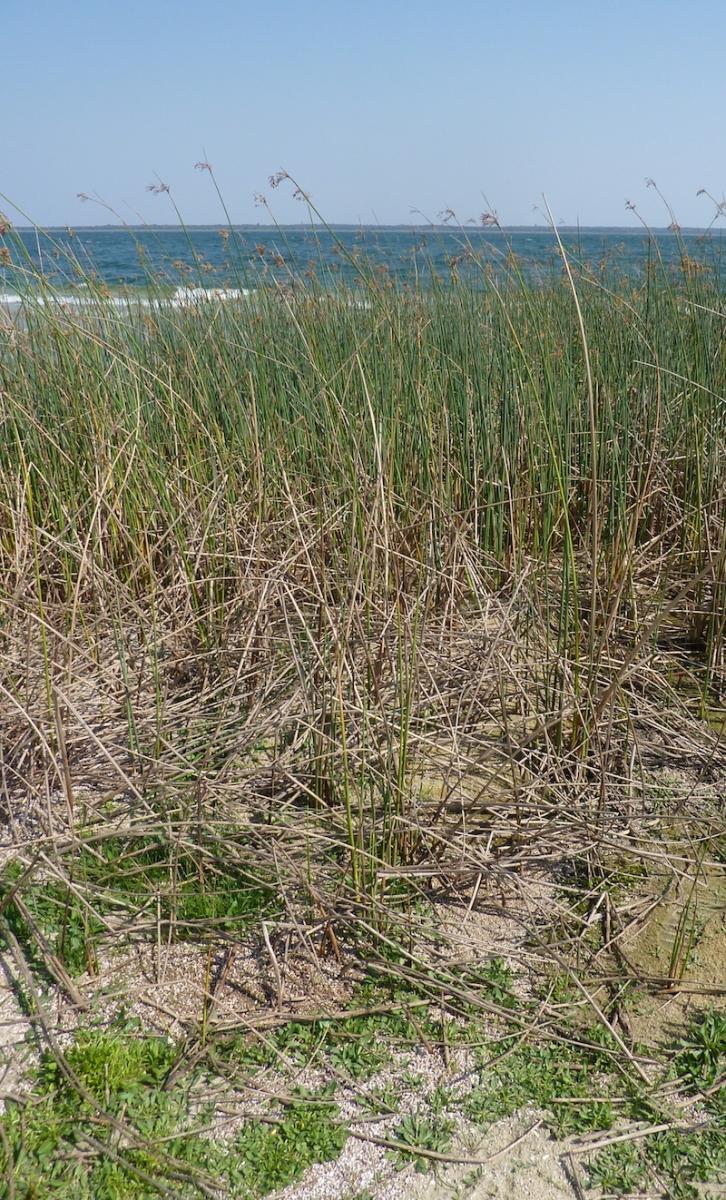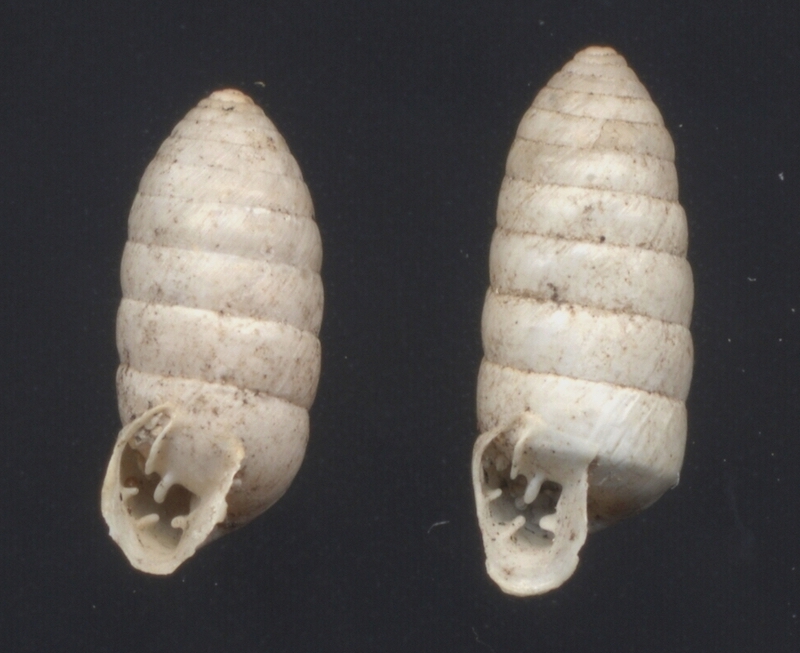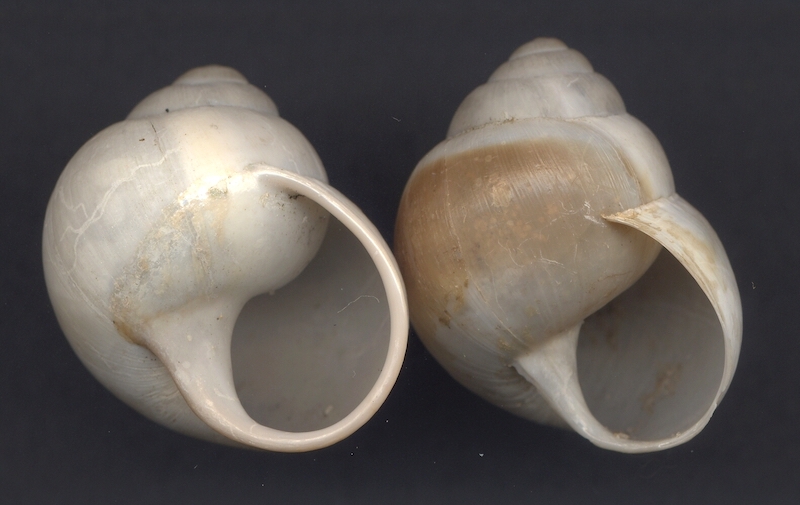|
A natural history tour with my son Sam in South Africa and Swaziland last year gave me an opportunity to see at first hand the habitats of some iconic land molluscs such as the “giant African land snails” of the family Achatinidae.
We visited at the end of the dry winter season and so did not expect to easily see living snails and this proved to be the case, especially in the subtropical North East. Our first stop was the southern end of the famous Kruger National Park. Here, large shells were visible on the ground amongst the scrub. Where it was possible to examine these (for example at the edge of camp), they were all specimens of Achatina immaculata (Lamarck, 1822), the pink-lipped agate snail, a common East African species. Several of the shells I found had large holes (or gashes) in the body whorl (figure 1) and the animals had probably been predated upon.
There was some discussion about this with our guide, who suggested several possible suspects, one of which is the Southern Ground Hornbill, Bucorvus leadbeateri (Vigors, 1825) (figure 2). These are large (90-129cm), mostly carnivorous, birds eating a range of diet from insects to snakes and rats. But during the dry season, their diet is known to include snails. The birds use their powerful dagger-like bills to cut and tear their prey, hunting on the ground in groups by walking, probing, pecking, and digging. In this way they could quite easily dig out aestivating snails; alternatively the snails could have been eaten as carrion after one of the frequent “controlled burn” fires intended to regenerate areas of scrub.
We visited Malolotja nature reserve, a mountain highveld area extending over 18 000 hectares in north-west Swaziland and including Ngwenya, Swaziland's second highest mountain (1829 m). Molluscs from this area have been little studied, however amongst emerging plants on burnt high grassland at 1540 m (figure 3) amongst rock outcrops, also grazed by Blesbok and Rhebok, were some shells of the Achatinid Cochlitoma cinnamomea Melvill & Ponsonby,1894 (figure 4).
Whilst staying in Mbabne, Swaziland, the hotel garden held some examples of the familiar garden snail, Cornu aspersum. Large snails of the South African carnivorous genus Natalina in the family Rhytididae, are known to feed on this introduced species in preference to indigenous species which have evolved various escape mechanisms such as rapid crawling and jumping! I found the shell of the related dwarf cannibal snail, Nata vernicosa (Krauss, 1848) in the garden of a restaurant in Mkuze (figure 5).
The coastal sand forest of Eastern South Africa is home to the largest and heaviest South African snail, Metachatina kraussi (L. Pfeiffer, 1846). Apart from its size, this species is distinguished by the lack of a definite cut–off point at the base of the inner lip. At the end of the dry winter in Kwa Zulu Natal, we saw large empty shells of this species lying in the coastal sand forest at Tembi and Rocktail Bay, just south of the South African border with Mozambique (figures 6 and 7).
Whilst staying at Rocktail Bay, we took the opportunity to don wet suits and go out on one of the inflatable dive boats over the reef which brought us up close to some amazing views of Humpback Whales on migration which were “breaching” high out of the water around us. On our return to the shore (figure 8), we had our lunch amongst dunes at the edge of the forest that were covered in Carpobrotus edulis (L.) (Hottentot Fig). It was then that I noticed a number of snail shells on the sand around and under the plants. Collecting snail shells whilst wearing a wet suit is not to be recommended (no tubes or even pockets!). I had to hold the shells in my hand until we had driven back in the jeep to the dive centre. I found that I had the shells of two locally common but interesting species. The first species was the terrestrial prosobranch Tropidophora ligata (Müller, 1774) (figure 9) a common and widespread member of this genus, (which has its centre of diversity in the island of Madagascar) found in a wide range of habitats. These snails are more susceptible to dessication than land pulmonates due to anatomical differences, but are able to seal themselves behind a tight fitting operculum in a similar way to the British land prosobranch, Pomatias elegans.
The second species here was of the genus Gittenedouardia, or bark snails (figure 10) of the family Cerastidae. Shells of most Gittenedouardia species in life are normally covered with either dust or bark particles, which provide effective camouflage against the surface upon which they crawl (compare this with the European Merdigera obscura, of the family Buliminidae, see Mollusc World issue 24).
The leaf litter of the sand forest was very dry but a quick look under a couple of small stones used to mark a path in the sand forest revealed a shell of the Subulinid Opeas florentiae Melvill & Ponsonby,1901 (figure 10), which is distinguished by having a notched lip and a distinct spiral thread below the suture.
The second species at this site (figure 12) was Trachysystis burnupi (Melvill & Ponsonby, 1892), a pinwheel snail, one of approximately 34 species of this genus found in Kwa Zulu Natal and belonging to the Charopidae, a southern family with species present in Australia, and South America as well as southern Africa.
Once large areas of “sterile” forest of introduced Eucalyptus and pine trees are penetrated, the area of the Mabibi community behind the native coastal forest consists of flower-rich open grassland with clumps of trees (figure 13).
Scattered on the very dry ground we found shells of the fragile Archachatina churchilliana (Melvill & Ponsonby, 1895) (figure 14), named, not after the famous politician, but in honour of the British collector G.C. Churchill. This is a variable species in shape and presence or absence of stripes and was originally split into three separate species. We also found this species in the Palm Veldt area of Tembi Elephant Reserve, together with another species of Tropidophora, this time the spirally ridged T. insularis (Pfeiffer, 1851).
Lake Sibaya, the largest freshwater lake in South Africa, is a drowned river valley, formerly connected to the sea, with a surface area of 77 km² and an average depth of 13 m. Walking along the edge of the eastern shore, we saw many thousands of freshwater mollusc shells (figure 15).
The vast majority of the shells were of the Thiarid Melanoides tuberculata Müller, 1774. Also present in large numbers were shells of the freshwater clam Corbicula fluminalis africana (Krauss, 1848) (figure 16), now regarded as conspecific with the invasive Asian Clam Corbicula fluminalis (Müller, 1774). The feasibility of exploiting this species’ ability to accumulate metals such as copper, lead, zinc and manganese has been suggested as a method of monitoring water quality in South African freshwater biotopes (de Kock and Wolmarans, 2007).
Our trip continued to a very different area of South Africa, the Western Cape. The natural history of this province is famous for the Fynbos, the smallest of the world’s six Floral Kingdoms, a shrub and heathland mainly in winter rainfall coastal and mountainous areas with a Mediterranean climate and over 9000 species of plants. Under low shrubs behind the shore at Platboom , just north of the Cape of Good Hope (figure 17), there were a number of small shells of the variable Fauxulus capensis (Küster, 1841) (figure 18), the type species of a genus, in the family Orculidae, which is found in South Africa and Madagascar, with a single species in Malawi. For anatomical reasons Gittenberger (1979) transferred them to the Orculidae from the Chondrinidae. According to Herbert & Kilburn (2004), the Cape species of Fauxulus dwell in more open habitats (such as the Fynbos) than the forests occupied by the eastern species.
Finally, we spent a few nights further up the west coast at Lambert’s Bay, where we stayed in a hotel opposite a chip factory (!) which was formerly a fish processing plant prior to the collapse of local fish stocks. We were there primarily to look for birds and to visit the amazing local colony of Cape Gannets. However, always on the lookout for snails, there were several places on the coast (e.g. figure 19) where I found the shells of perhaps more than one species of Trigonephrus (figure 20) beneath vegetation. This genus, together with the closely related Dorcasia, was previously (Connolly, 1939) placed in the Acavidae, a family with a distribution which includes Madagascar, Sri Lanka and Australia. However they are now both placed in the family Dorcasiidae, part of the superfamily Strophocheiloidea, with other representatives in South America, another part of the ancient supercontinent of Gondwana.
Although on this visit I did not see other species, for example any members of the large Streptaxid genus Gulella, nor did I see many live snails due to the dry conditions, the trip was enough to give a glimpse of the interesting non-marine molluscs of this region. The marine molluscs are another story!
Acknowledgements Thanks are due to Dai Herbert of the Natal Museum, Pietermaritzburg, South Africa and Ben Rowson of Amgueddfa Cymru (National Museum of Wales) for advice and help with identification.
References Connolly, M., (1939). A monographic survey of South African non-marine mollusca. Annals of the South African Museum 33: 1-660. Gittenberger, E., (1979). Beiträge zur Kenntnis der Pupillacea. VIII. Einiges über Orculidae. Zoologische Verhandelingen 163: 1-44. Herbert, D. and Kilburn D. (2004). Field guide to the land snails and slugs of eastern South Africa. Natal Museum. de Kock, K.N. and Wolmarans, C.T., (2007). Distribution and habitats of Corbicula fluminalis africana (Mollusca: Bivalvia) in South Africa. Water SA 33 (5). Melvill, J.C. and Ponsonby, J.H., (1901). Descriptions of fourteen new species of terrestrial mollusca from South Africa. Annals and Magazine of Natural History Ser. 7, 8:315-321. Melvill, J.C. and Ponsonby, J.H., (1903). Descriptions of thirty-one terrestrial and fluviatile mollusca from South Africa. Annals and Magazine of Natural History Ser. 7, 12:595-609. |
figure 1: Predated A. immaculata, (height 132 mm) Lower Sabie, Kruger National Park, South Africa. (Photo: Peter Topley)
figure2: Southern Ground Hornbill, Kruger National Park. (Photo: Peter Topley)
figure 3: Malolotja nature reserve, Swaziland. (Photo: Peter Topley)
figure 4: C. cinnamomea , (height 62 to 74 mm) Malolotja, Swaziland. (Photo: Peter Topley)
figure 5: Nata vernicosa, Ghost Mountain Inn, Mkuze, Kwa Zulu Natal (width 14.5 mm). (Photo: Peter Topley) figure 6: Habitat of M. kraussi , Rocktail Bay, Kwa Zulu Natal. (Photo: Peter Topley)
figure 7: M. kraussi , Tembi Elephant Reserve (left, height 132 mm) and Rocktail Bay (right, height 145 mm), Kwa Zulu Natal. (Photo: Peter Topley)
figure 8: Coastal habitat of Kwa Zulu Natal near Rocktail Bay. (Photo: Peter Topley)
figure 9: T. ligata (height 18-19 mm), Rocktail Bay, Kwa Zulu Natal. (Photo: Peter Topley)
figure 10: A juvenile G. arenicola (Benson 1856) (height 16 mm), Rocktail Bay, Kwa Zulu Natal. (Photo: Peter Topley)
figure 11: Left - O. florentiae (height 8.9 mm), Rocktail Bay, Kwa Zulu Natal; Right – lithograph by J. Green (Melvill & Ponsonby, 1903). (Photo: Peter Topley)
figure 12: T. burnupi (width 7.8 mm), Rocktail Bay, Kwa Zulu Natal. (Photo: Peter Topley)
figure 13: Area of grassland and scrub, Mabibi Community area, Kwa Zulu Natal. (photo: Sam Topley)
figure 14: A. churchilliana, Mabibi Community area, Kwa Zulu Natal, South Africa. (Photo: Peter Topley)
figure 15: Shore of lake Sibaya with accumulations of freshwater shells amongst the reeds. (Photo: Peter Topley)
figure 16: C. fluminalis africana Lake Sibaya (width 9-11 mm). (Photo: Peter Topley)
figure 17: Habitat of F. capensis (foreground) above the upper shore at Platboom, Table Mountain National Park, Cape Province. (Photo: Peter Topley)
figure 18: F. capensis from Platboom, Cape Province (height 7.6-8.2 mm). (Photo: Peter Topley)
figure 19: Coastal habitat of Trigonephrus near Lambert’s Bay, Cape Province. (Photo: Peter Topley)
figure 20: Trigonephrus sp. from near Lambert’s Bay, Cape Province (height c.35 mm). (Photo: Peter Topley) |
An encounter with South African non-marine molluscs
Issue
27
Page
16

